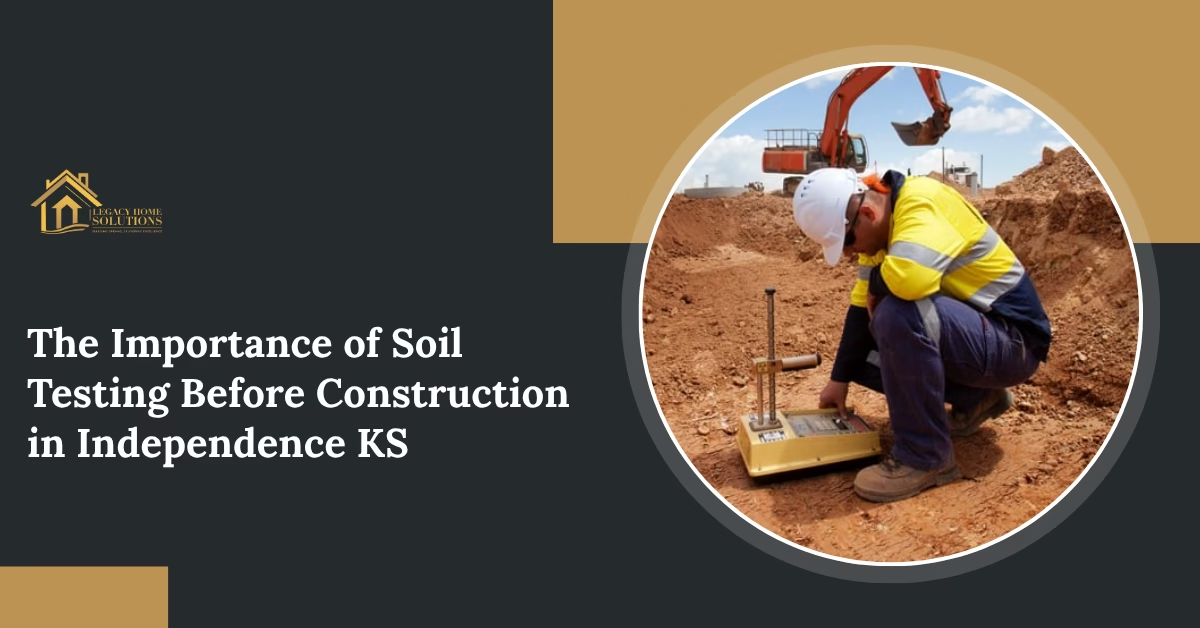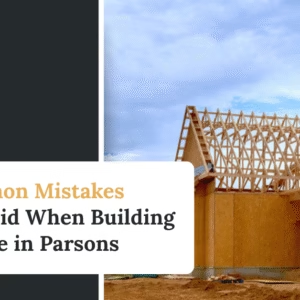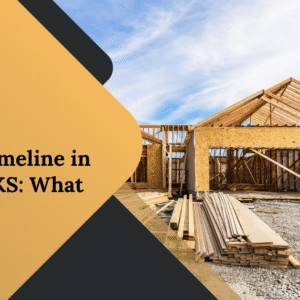A few years ago, a family in Independence, Kansas, began building their dream home on a peaceful corner lot. The design was perfect, the location beautiful, and the plan flawless. But months after moving in, small cracks appeared along the walls and floors. Within a year, their doors jammed, and rainwater pooled near the porch. The issue was not poor workmanship. It was the ground beneath their home.
Before starting any construction in Independence, there is one crucial step that can save years of stress.
A strong home doesn’t start with walls or beams; it starts with the earth it stands on.
This is where soil testing becomes essential. It is more than a technical formality. It is a science-backed process that protects your investment, confirms stability, and creates peace of mind before a single brick is laid. This guide explains why soil testing is essential before construction begins, how it works, and how it confirms stability for decades to come.
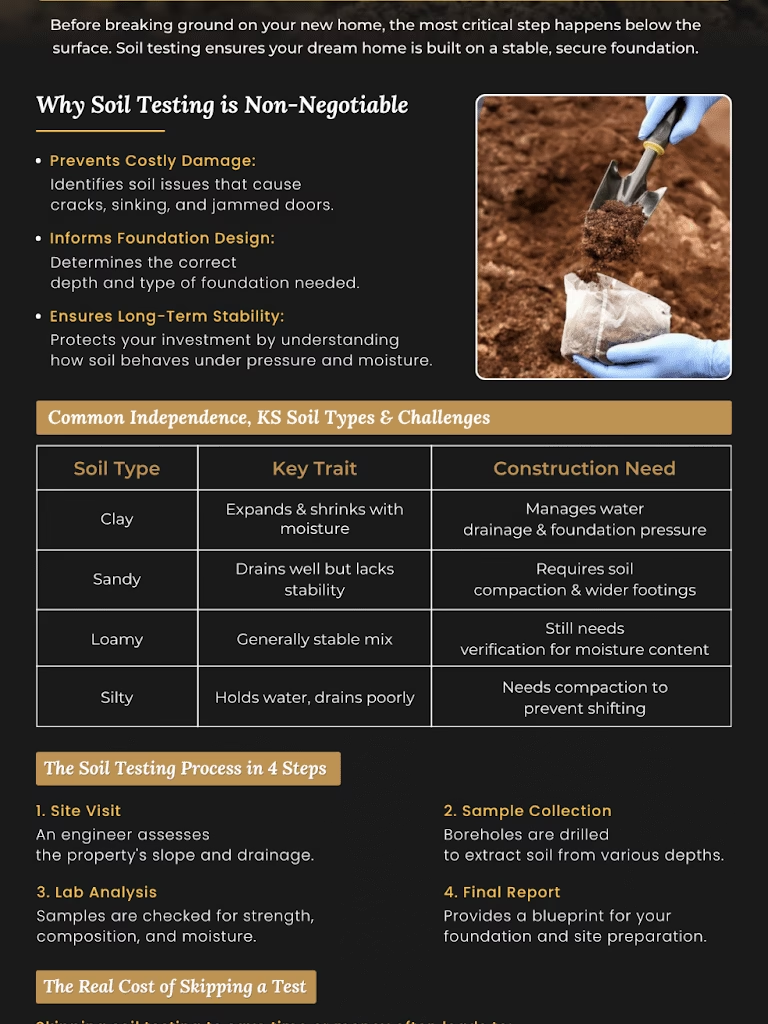
What Is Soil Testing, and Why Does It Matter?
Soil testing is a scientific study of the ground where you plan to build. It tells engineers what type of soil exists, how it behaves under pressure, and how well it will support the structure above.
Every soil is different. Some soils, like firm clay, can hold weight easily. Others, like loose sand, need reinforcement. Without testing, a builder might assume the ground is stable when it is not, and that mistake can cost thousands later.
Main Purposes of Soil Testing
- To measure soil strength and stability.
- To detect moisture levels, drainage, and compaction.
- To determine how deep a construction foundation should go.
- To prevent cracks, uneven settling, or future damage.
In professional construction in Independence, soil testing guides every decision that follows. It is not about guessing. It is about knowing.
How Soil Testing Protects Your Home’s Foundation
The foundation of your home is its backbone. If the soil below it shifts, expands, or weakens, cracks appear, walls tilt, and doors stop closing properly. This is why soil testing is critical for foundation safety. When engineers test the ground, they evaluate two key things: how much weight the soil can carry and how much it will move over time.
If the soil is too soft, the builder may need to design deeper footings. If it is rich in clay, extra drainage or moisture barriers may be added to prevent swelling. Every result shapes a smarter design.
The Chain of Protection
- Soil Test: Determines soil composition and load capacity.
- Foundation Design: Adjusted based on test results.
- Site Preparation: Ground is graded and compacted.
- Construction Foundation: Built to handle long-term pressure.
Skipping soil testing risks everything. Once a home starts to shift, repairs are costly and often permanent.
3. Common Soil Types Around Independence, Kansas
Independence sits on a mix of clay, loam, and sandy soil. Each has unique challenges that make soil testing for construction even more important.
| Soil Type | Characteristics | Impact on Construction |
| Clay Soil | Expands when wet and shrinks when dry. | Causes pressure on foundations and surface cracks. |
| Sandy Soil | Excellent drainage but low stability. | Needs wider footings and compacting for support. |
| Loamy Soil | Balanced mix of sand, silt, and clay. | Ideal for stability, but still needs moisture testing. |
| Silty Soil | Holds moisture and drains slowly. | Requires compaction to prevent shifting. |
The Step-by-Step Process of Soil Testing
Understanding how soil testing works helps you see its value. It is not just about digging holes; it is a scientific process handled by specialists.
Step 1: Site Evaluation
An engineer visits your lot to examine visible features such as slope, vegetation, and drainage patterns. They decide where samples should be taken for the most accurate reading.
Step 2: Sampling
Small boreholes are drilled at several points around the building site. Samples are collected at different depths, usually from the surface down to 10 or 20 feet, depending on the project’s scale.
Step 3: Laboratory Testing
These samples are analyzed for composition, compaction, permeability, and shear strength. They also check for organic materials or contaminants that could weaken a structure.
Step 4: Geotechnical Survey Report
The final report summarizes all data and provides recommendations for your foundation type, footing size, and drainage requirements.
This geotechnical survey acts as a roadmap for safe and stable building. Every line in the report helps prevent future surprises below the surface.
Why Builders Rely on Soil Reports
To a builder, a soil report is like a blueprint of the earth. It tells them exactly what they are working with. From load calculations to design adjustments, these insights determine how the home will stand.
Key Decisions Influenced by Soil Testing
- How deep must the foundation go?
- What concrete mix or reinforcement should be used?
- Whether extra drainage or waterproofing is required.
- How the site should be leveled and compacted.
For example, in areas of Independence where clay is heavy, a slab-on-grade foundation may not be ideal. Instead, pier or beam foundations help minimize movement. Without testing, those decisions rely on guesswork, and homes built on guesswork rarely last long.
Builder’s Tip:
Our team has guided dozens of families through this process. We believe homeowners should always understand their soil report, so we explain each section clearly and show how it affects their home’s design choices.
The Link Between Soil and Long-Term Foundation Safety
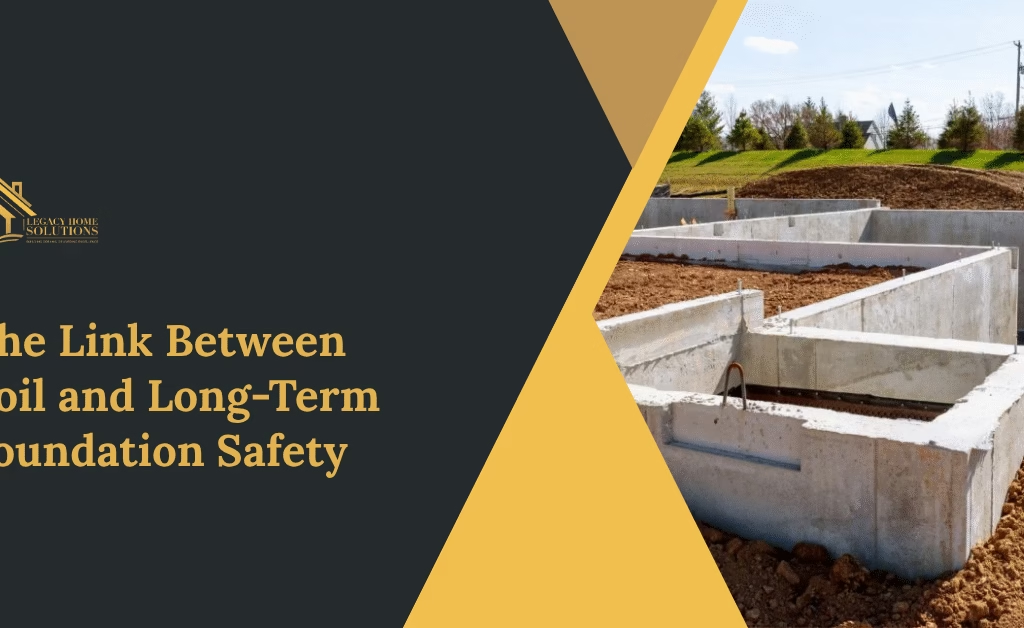
Once construction starts, everything depends on what was discovered during the testing stage. Proper soil data confirms that the home’s construction foundation stays solid even through temperature changes, storms, and seasonal movement.
Without proper testing, foundations can crack or tilt as soil expands and contracts. Soil testing provides engineers with the knowledge to balance those forces, keeping everything aligned.
Common Issues Prevented by Testing
- Structural cracks in walls and floors.
- Water damage due to poor drainage.
- Shifting that affects plumbing and wiring.
- Uneven floors or sinking corners.
Foundation safety is not a one-time goal. It is a long-term commitment to building smarter from the start.
How Soil Testing Saves Money in the Long Run
Many homeowners hesitate to invest in soil testing because it seems like an extra cost. In reality, it saves far more than it costs. The expense of a professional soil test is small compared to the thousands spent fixing cracked walls, sinking floors, or broken plumbing later.
Financial Benefits
- Prevents structural repairs that can exceed five figures.
- Reduces delays caused by poor soil conditions.
- Allows accurate budgeting for materials and labor.
A solid home starts with solid data. Spending a little now prevents major expenses later, a fact that every experienced builder understands.
Expert Insight:
After over 20 years of building in Kansas and Oklahoma, our team at Legacy Home Solutions has learned that even a half-inch variance in soil density can change how a foundation performs. Early testing avoids future surprises and keeps construction precise from day one.
The Risks of Skipping Soil Testing
Some builders or property owners skip soil testing to save time or money. Unfortunately, that shortcut often leads to long-term regret. Without testing, foundations are designed blindly. Even small shifts in moisture or soil type can cause damage within the first few years.
Possible Consequences
- Uneven settling leading to wall or ceiling cracks.
- Foundation failure requiring expensive reconstruction.
- Drainage problems are causing flooding or mold.
- Legal or insurance issues due to construction faults.
Every successful project in construction in Independence starts with knowledge, not assumptions. Skipping testing may save a week today, but could cost a lifetime of repairs tomorrow.
What Homeowners Should Expect During Testing
For homeowners, the soil testing process is simple and minimally invasive. It typically takes one to three days, depending on the property size. Engineers will drill small boreholes, collect samples, and restore the surface after testing.
Within a week or two, you will receive a report detailing the soil’s characteristics and the best foundation options.
You do not need to be an expert to understand the report. Your builder will walk you through it, explaining how each result influences your project. This transparency builds confidence and shows that every decision is backed by science, not assumption.
The Emotional Side of Soil Testing: Confidence and Security
Building a home is emotional. It is not just about walls and roofs; it is about creating a safe place for your family’s memories. Knowing your home stands on tested, stable soil brings peace of mind that cannot be replaced. You will not worry about cracks or shifting floors. You will know your home is safe, stable, and built to last through Kansas seasons.
Confidence grows when your foundation rests on knowledge, not luck.
This is why experienced builders always start with soil testing. It is not just science. It is a promise of safety.
Conclusion
The ground beneath your home tells a story. By investing in soil testing before construction in Independence, KS, you learn that story, its strengths, its challenges, and its potential. That knowledge gives your builder the power to design a home that lasts for generations.
Soil testing is more than a technical step. It is the heart of foundation safety, the start of smart site preparation, and the secret to every stable construction foundation. When the earth is tested, the plan is solid, and the home that rises above it becomes something you can trust for a lifetime.
Let’s Build Your Dream Home on Tested Ground.
Partner with Legacy Home Solutions to start your project with expert soil testing, precision planning, and lasting craftsmanship.
FAQs
1. How does soil testing affect long-term maintenance costs?
Accurate soil testing reduces long-term maintenance by preventing foundation shifts, water leaks, and structural cracking.
2. What is the difference between basic soil testing and a full geotechnical survey?
A geotechnical survey provides in-depth data on soil strength, layers, and water tables, guiding precise foundation design decisions.
3. How often should soil testing be repeated for large developments?
For major or multi-lot projects, new testing is advised every few years to account for seasonal and environmental soil changes.
4. Can improper site preparation undo the benefits of soil testing?
Yes, even with accurate soil data, poor site preparation can lead to drainage issues or uneven compaction that harm stability.
5. Why do insurance and lenders value professional soil reports?
Verified soil reports confirm foundation safety and reduce financial risk, often speeding up loan approvals and project approvals.

